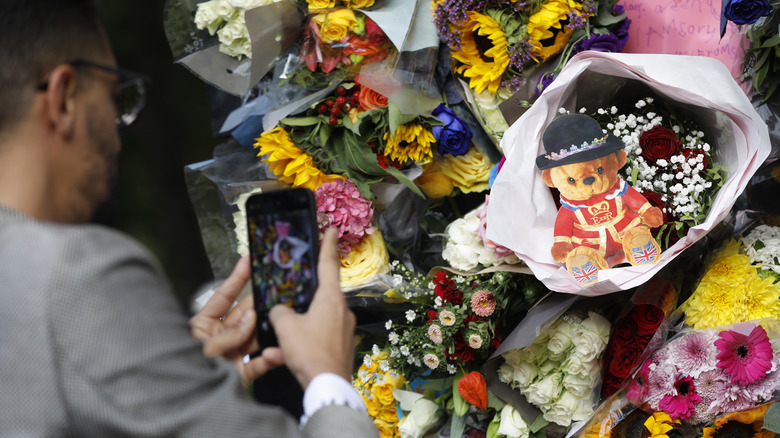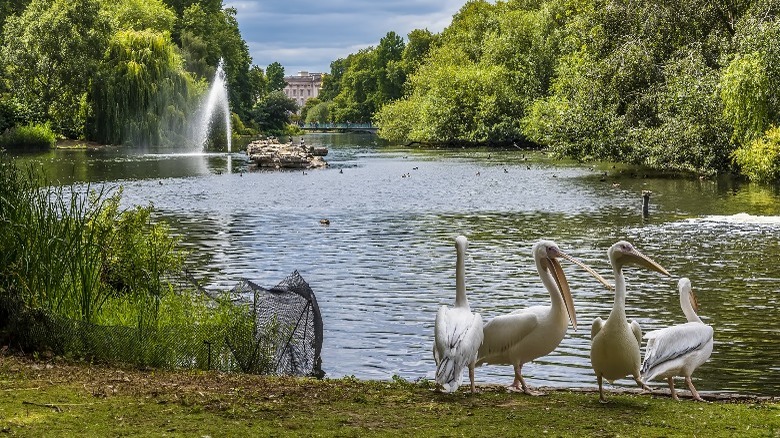The Whimsical History Of Westminster's Birdcage Walk
As Queen Elizabeth II's coffin processed through London on September 14, birds may have had a better view of it than most of the people. According to I News, the coffin traveled from Buckingham Palace to Westminster Hall, where the queen will lie in state for four days. After leaving the palace, the procession route went along the edge of St. James's Park, near a street called Birdcage Walk, the site of floral tributes to the queen (above). Both the street and the park have a long history of housing birds.
ITV explains that the street is on the former site of the royal aviary, built during the reign of King James I in the early 1600s to house royal hawks and falcons. The second part of the street's name — walk — refers to the fact that until 1828, only the royal family and the Hereditary Grand Falconer, who looked after the birds, were allowed to ride past the aviary in a carriage. Anyone else had to walk.
Pelicans and murders
St. James's Park was opened to the public by King Charles II (per Royal Parks), and though the royal aviary is no longer there, the park is still the home of different types of waterfowl. They flock to the lake in the center of the park, and to Duck Island within the lake, which is reserved for the birds' use. In addition to ducks, park visitors may see pelicans. They've made the park home since 1664, when the Russian Ambassador gave King Charles II a gift of pelicans. Those currently living in the park are descendants of the originals (via Londontopia).
Birdcage Walk also has one not-so-pleasant association: It was the site of a murder in 1848. According to the British Library, a Coldstream Guard named Henry Ducker left the guards' barracks in St. James's Park and went down Birdcage Walk. There, he encountered his lover, Annette Meyers, who shot him in the head. The library explains that Ducker had repeatedly borrowed money from Meyers while promising to marry her, but had not fulfilled his promise. Although there was no question of Meyers' guilt, the public sympathized with her and campaigned successfully to have her death sentence commuted to imprisonment. These days, Birdcage Walk is a much more peaceful site.

